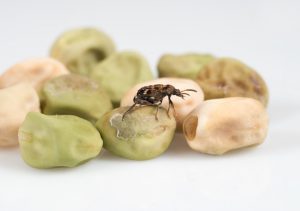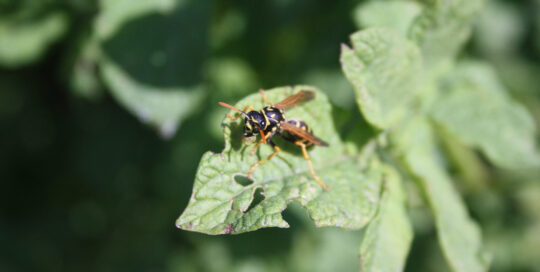Keeping your peas pest and disease free
Views: 3960

St. Patrick’s Day is approaching, which is when a number of gardeners traditionally plant their peas and potatoes. Peas are one of those typically easy crops to grow as long as you keep your plants pest and disease free.
While many parts of the country can plant peas in the middle of March, whether you should or not really depends on the type of winter you’ve had. Peas are one of those early season crops that will germinate when the soil temperature is 40 degrees F. However, you want to make sure it’s going to remain warm enough to give them a chance to grow. If the weather turns cold, you could end up with the seeds rotting in the ground. If they don’t germinate within 3 weeks, plant them again.
Diseases
Once the peas are up and growing, they still might succumb to damping off. This is a fungal disease that often plagues seedlings. I typically have more problems with it on my indoor seedlings when I start plants in the house. If it’s particularly cool and wet in the spring, the peas might have a problem with it. The peas will look yellow or even reddish. They will basically wilt and die. You may think they just need to be fertilized. Unfortunately, there’s not much you can do except to plant again.
Blights
Peas are also susceptible to a couple of different blights, including bacterial blight and Asocochyta blight, which is actually a combination of 3 fungal diseases. Both bacterial and Ascocohyta blight are found in garden debris, so even if you suspect you’ve had issues with these diseases, be sure to remove all of the plant material from the garden. Ascocohtya blight is suspected if the leaves turn yellow with black spots and the stem looks black. Flowers typically fall off, as well, and the plant dies. Bacterial blight tends to have shiny, almost waterspot looking, areas on the leaves. If you think you have either infection, pull and dispose of all of your plants. Don’t compost them and don’t plant peas in that area again for a few years.
Powdery mildew is a common issue for many pea varieties, unless you choose those that are bred to be less susceptible to the fungal infection. You can help prevent it by plant where the peas have plenty of air flow. You can also water from the bottom using a drip system versus overhead watering. But if you do get powdery mildew, you can sometimes ignore it. Take what you get from the plants (which often don’t produce as well). Alternatively, treat it using anything from a 9:1 water to hydrogen peroxide mixture or a 4:1 water to milk concoction sprayed on every week. Commercial fungicides are also effective if you have a severe issue.
Pests
Aphid are one of the most common pests, but are fairly easy to control with a strong blast of water if beneficial insects aren’t keeping them in check.
A bigger problem for some gardeners are pea weevils. They are found throughout the country, but are particularly troublesome in the Pacific Northwest. The weevils emerge in the early summer as the peas are in blossom providing them with an instant food source. One way to outwit them is to plant early pea varieties, but if you do happen to have a problem with them, research has demonstrated that the compound, rotenone, which is derived from a tropical plant found in South America, will effectively kill them. However, since there are questions on whether rotenone causes Parkinson’s like symptoms in people, you can also try diatomaceous earth if you would rather be on the safe side.
Peas are generally a fairly foolproof crop for the early spring. Plant them with your potatoes as early as you can to enjoy them together by June or July.
Meet Amy Grisak
Amy is a freelance author and photographer in Great Falls, MT who specializes in gardening, foods, and sustainable agriculture. She provides information on every kind…
Amy's Recent Posts

Looking into the Crystal Ball for a Pest Report








